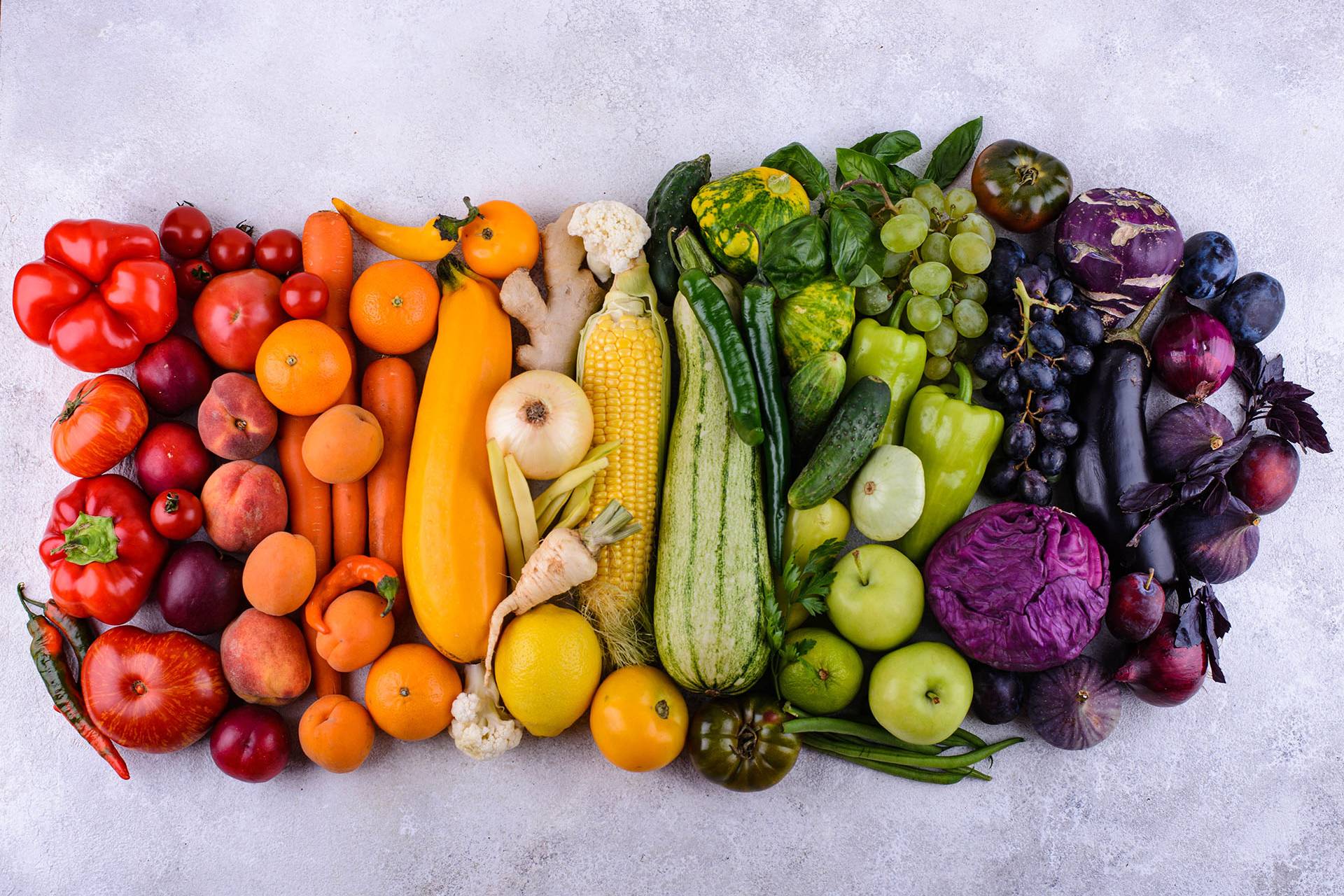A Rainbow In Spring
Wednesday, March 27, 2024
by Catherine Sigman, Dining Services Nutrition Clerical

A few weeks ago, we shared a post about the benefits of eating in season produce. Seasonal fruits and vegetables are more likely to be at peak flavor and nutrient content, and grocery prices for these items are typically cheaper as a result of reduced production and transportation costs.
UGA SNAP-Ed has a great chart that shows the seasonal availability of produce in Georgia.
But now that we know what’s in season, how do we decide what to put on our plate?
Eating The Rainbow
The wide range of produce colors comes from the assortment of vitamins, minerals, and phytonutrients found in each fruit or vegetable. To ensure we are consuming a wide variety of nutrients, we can remind ourselves to “eat a rainbow” on our plates.
Vitamins are organic substances produced by plants and animals that are essential for the body’s cellular function. These include vitamin A, all forms of vitamin B, vitamin C, vitamin D, vitamin E, and vitamin K.
Minerals are inorganic substances that come from the earth but are still required for the body to function properly. Examples of these include iron, magnesium, copper, iodine, zinc, and calcium.
Phytonutrients are substances produced by plants for their own protection, that also provide anti-cancer and anti-heart disease effects to humans when we eat them.
Interpreting The Rainbow
The color red tends to indicate a richness in carotenoid lycopene, a free radical scavenger that seems to protect against heart and lung disease.
Orange and yellow often provide beta carotenoids, which can support intracellular communication and may help prevent heart disease.
The color green suggests a richness in cancer-blocking chemicals like sulforaphane, isothiocyanates, and indoles.
Blue and purple both indicate the presence of antioxidants like anthocyanins, which are believed to delay cellular aging and block the formation of blood clots.
Lastly, the rainbow also includes the colors white and brown. The onion group contains allicin, which has anti-tumor properties, and other white and brown foods tend to contain antioxidant flavonoids like quercetin and kaempferol.